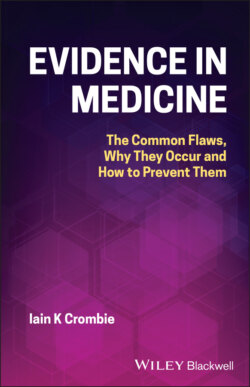Читать книгу Evidence in Medicine - Iain K. Crombie - Страница 17
CHAPTER 2 Sources of Bias in Randomised Controlled Trials
ОглавлениеThe great strength of randomised controlled trials is that they provide a fair comparison of treatments. However flaws in the design and conduct of clinical trials can hamper the ability to make fair comparisons. This chapter explores the nature and frequency of these problems. It uses the findings from meta‐research studies that explore the quality of the methodology of large series of clinical trials, to identify the extent of these deficiencies [1, 2].
In essence, clinical trials are conducted in three stages. First, patients are allocated to receive the new treatment or the conventional one (or placebo). Then they are followed up over time to allow the effects of the treatment to occur. Finally the health status of the patients is assessed to show whether the new treatment has a better outcome than the comparator.
This chapter explores the types of flaws that occur at these three stages. The main concern is with the risk of bias. Bias occurs when the findings of a clinical trial do not provide a fair assessment of the true benefit of the new treatment. Poor quality of the study methods can increase the risk of bias. This chapter investigates the sources of bias and the impact these have on estimates of treatment effect.
